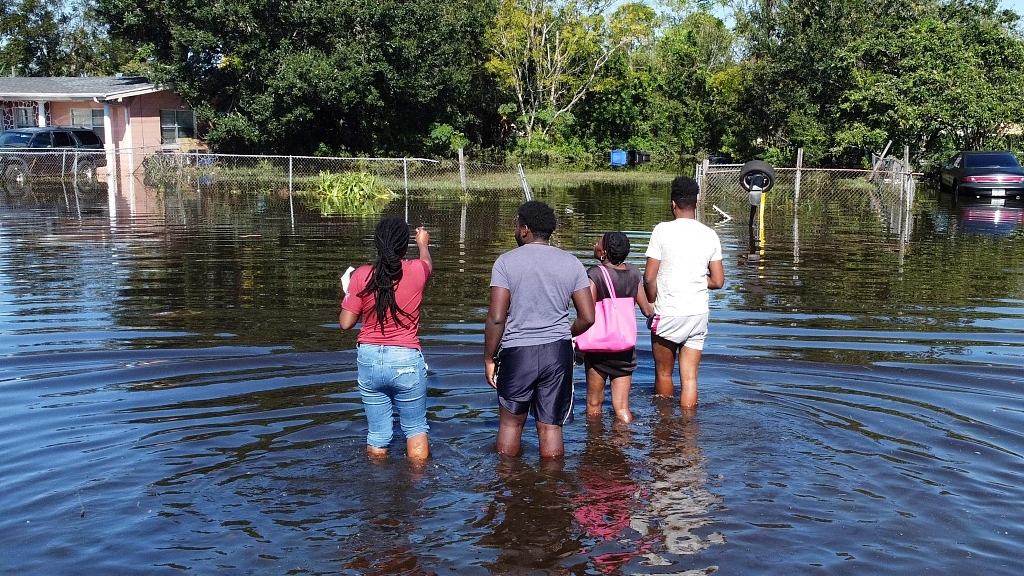
This aerial photo shows an overturned car in flood waters in the aftermath of Hurricane Ian in Fort Myers Beach, Florida, September 29, 2022. /CFP
This aerial photo shows an overturned car in flood waters in the aftermath of Hurricane Ian in Fort Myers Beach, Florida, September 29, 2022. /CFP
Climate change added at least 10 percent more rain to Hurricane Ian, according to a research study conducted after the storm.
The research compared peak rainfall rates of the real storm to about 20 different computer scenarios of a model with Hurricane Ian's characteristics without human-induced climate change.
"The real storm was 10 percent wetter than the storm that might have been," said study co-author Michael Wehner, a climate scientist at the Lawrence Berkeley National Lab.
Forecasters predicted Ian would accumulate 2 feet (61 centimeters) of rain in parts of Florida by the time it stopped.

Residents wade through water to get to their house in a flooded neighborhood following Hurricane Ian in Orlando, Florida, October 1, 2022. /CFP
Residents wade through water to get to their house in a flooded neighborhood following Hurricane Ian in Orlando, Florida, October 1, 2022. /CFP
For every extra degree of warmth Celsius (1.8 degrees Fahrenheit), the air in the atmosphere can hold 7 percent more water.
Statistically, the global seasonal temperature from June to August was 0.89 degrees Celsius (1.60 degrees Fahrenheit) above the 20th-century average of 15.6 degrees Celsius (60.1 degrees Fahrenheit), based on temperature data published in August by the National Oceanic and Atmospheric Administration (NOAA).
Given the enormous size and heat capacity of the global oceans, it takes a tremendous amount of heat energy to raise the average surface temperature on Earth, even a small amount.
Since rising temperatures will intensify the Earth's water cycle and increase evaporation, more frequent and severe storms will pound certain countries and regions.
(All images via CFP, with input from AP)
(If you want to contribute and have specific expertise, please contact us at nature@cgtn.com.)